Everything You Need to Know About Tracking a Buck
Become a better hunter. Discover expert tips for tracking bucks in any terrain, reading deer signs, and planning your hunt. Gear up for success today.

Tracking bucks is both an art and a science, requiring patience, keen observation, and a thorough understanding of deer behavior. Whether tracking through snow-covered terrain or following subtle signs on bare ground, mastering these skills can dramatically increase your hunting success. Our guide explores different tracking techniques, how to interpret deer signs, and strategies for tracking wounded animals.
<div class="rt-cta"><a class="cta-link-button inline-link" href="https://www.fleetfarm.com/category/hunting-shooting/_/N-1096313067">Shop Now for the Upcoming Hunting Season</a></div>
Understanding Buck Behavior and Travel Patterns
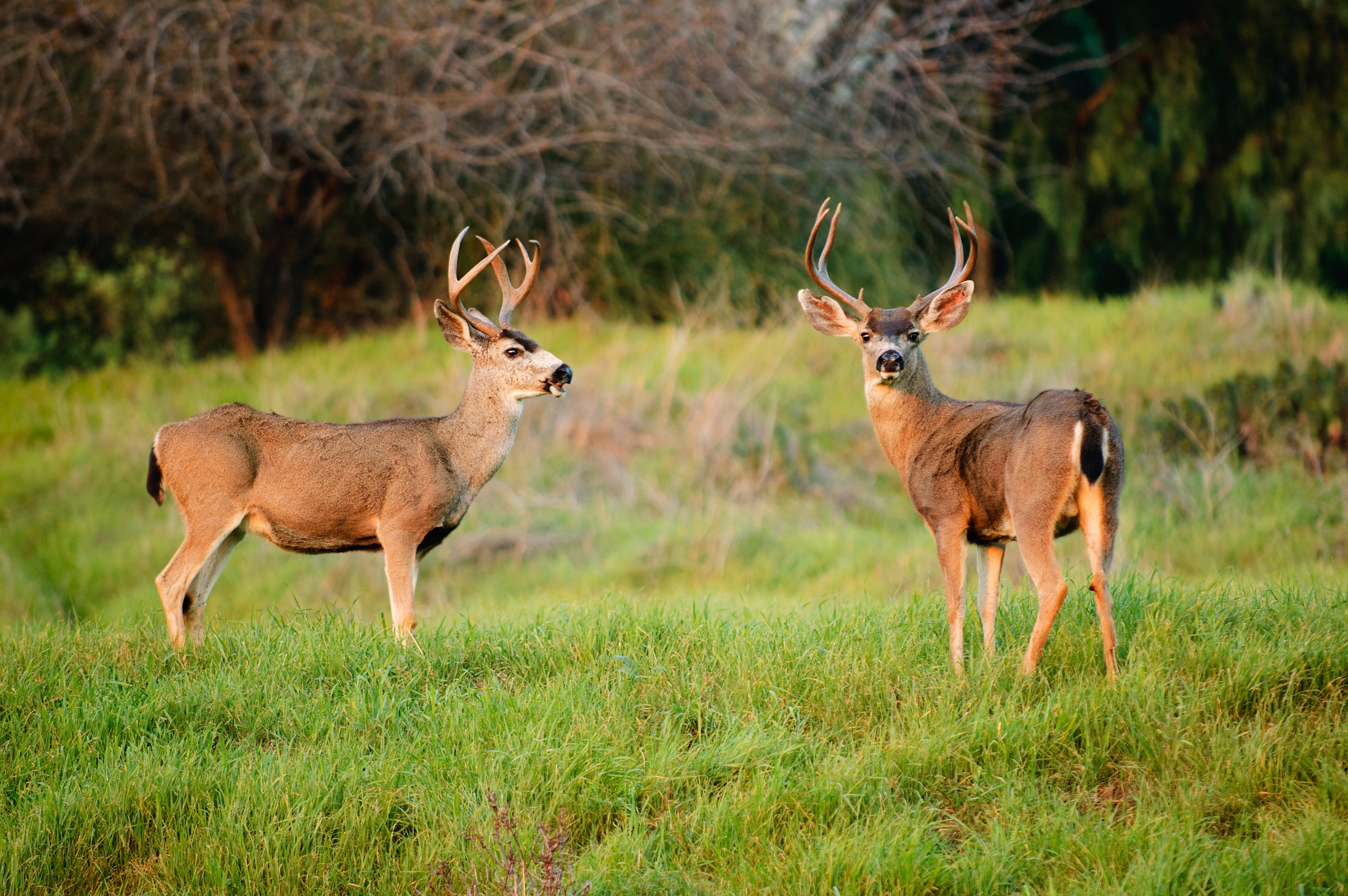
The foundation of successful buck tracking begins with understanding how these animals move through their environment and how their behaviors change throughout the year.
Daily Patterns and Core Areas
Mature whitetail bucks typically follow predictable patterns within their home range. In fact, the older they grow, the more predictable they become, though they simultaneously become more cautious. Their daily routine revolves around traveling between bedding areas (where they rest during daylight) and feeding areas (which they visit primarily at dawn and dusk).
White-tailed deer are crepuscular animals, meaning they're most active during twilight hours. During the day, especially in heavily hunted areas, they seek secluded places to bed down and remain there unless disturbed. A buck's core area, where he spends most of his time, consists of his primary bedding locations and the routes he uses to access food and water.
Seasonal Movement Changes
Buck movement patterns vary significantly across seasons:
Pre-Rut and Rut Period: During the breeding season (rut), bucks dramatically expand their movement range, often traveling great distances in search of receptive does. Their travel becomes less predictable as they leave established patterns to follow breeding instincts.
Post-Rut and Winter: After the breeding season, bucks focus on recovering energy and typically return to more consistent patterns between food sources and bedding areas. They become more focused on high-quality food sources and conserving energy.
Early Season: In late summer and early fall, bucks often form bachelor groups and establish more visible patterns visiting agricultural fields and other major food sources. This predictability typically changes once hunting pressure begins.
Terrain Influence on Travel
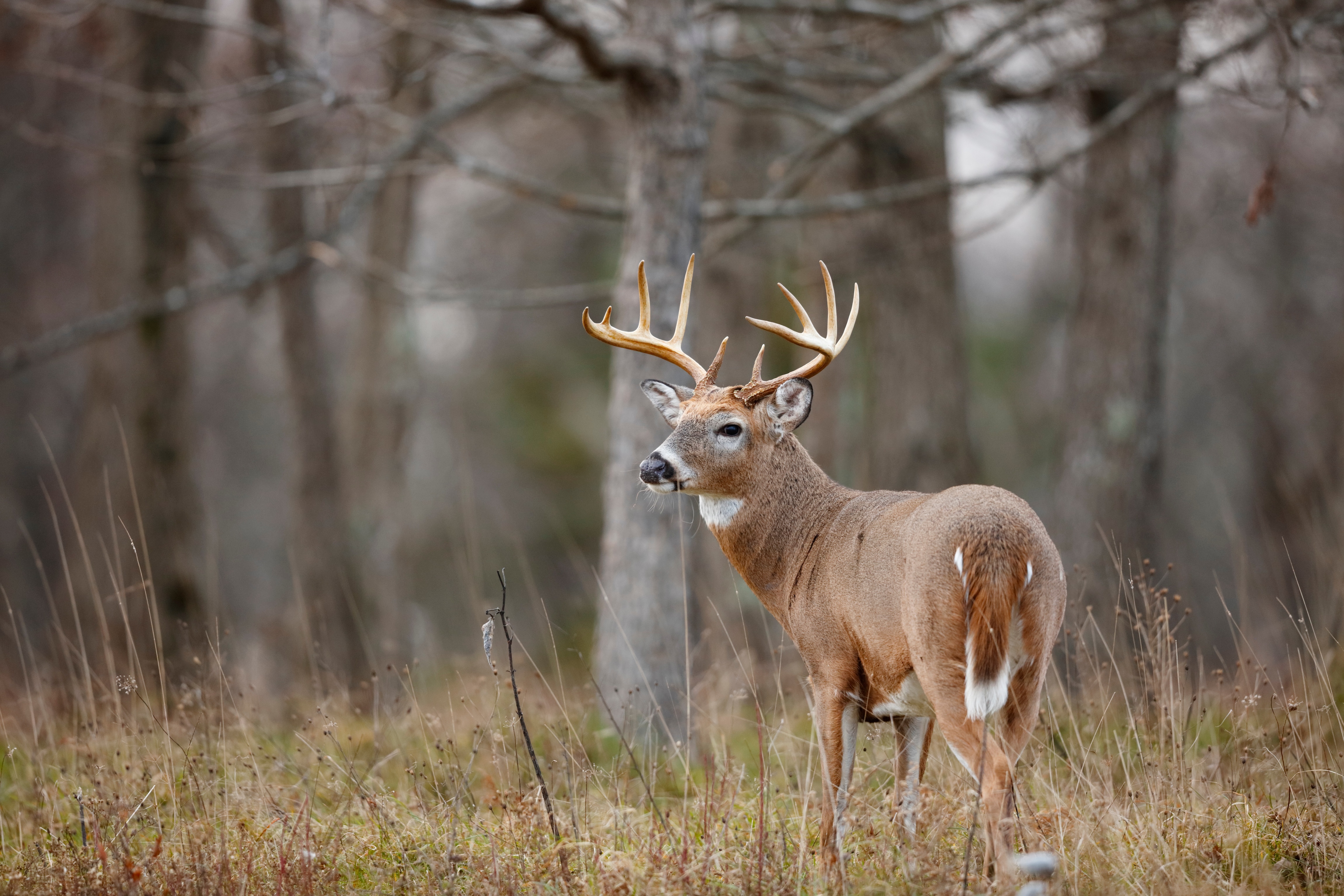
Bucks use terrain features strategically when moving across their home range:
Mature bucks prefer to travel along edges, ridgelines, saddles, and other terrain features that provide security. They frequently use natural funnels (narrow corridors created by topography or vegetation) when moving between bedding and feeding areas. In big woods settings, they commonly follow ridges because these routes provide efficient travel with good visibility and scenting advantages.
In big woods environments, concentrate tracking efforts on areas with signpost rubs and break up land by topographic features like ridges, mountain tops, and lowland bogs.
Identifying Buck Sign in the Wild
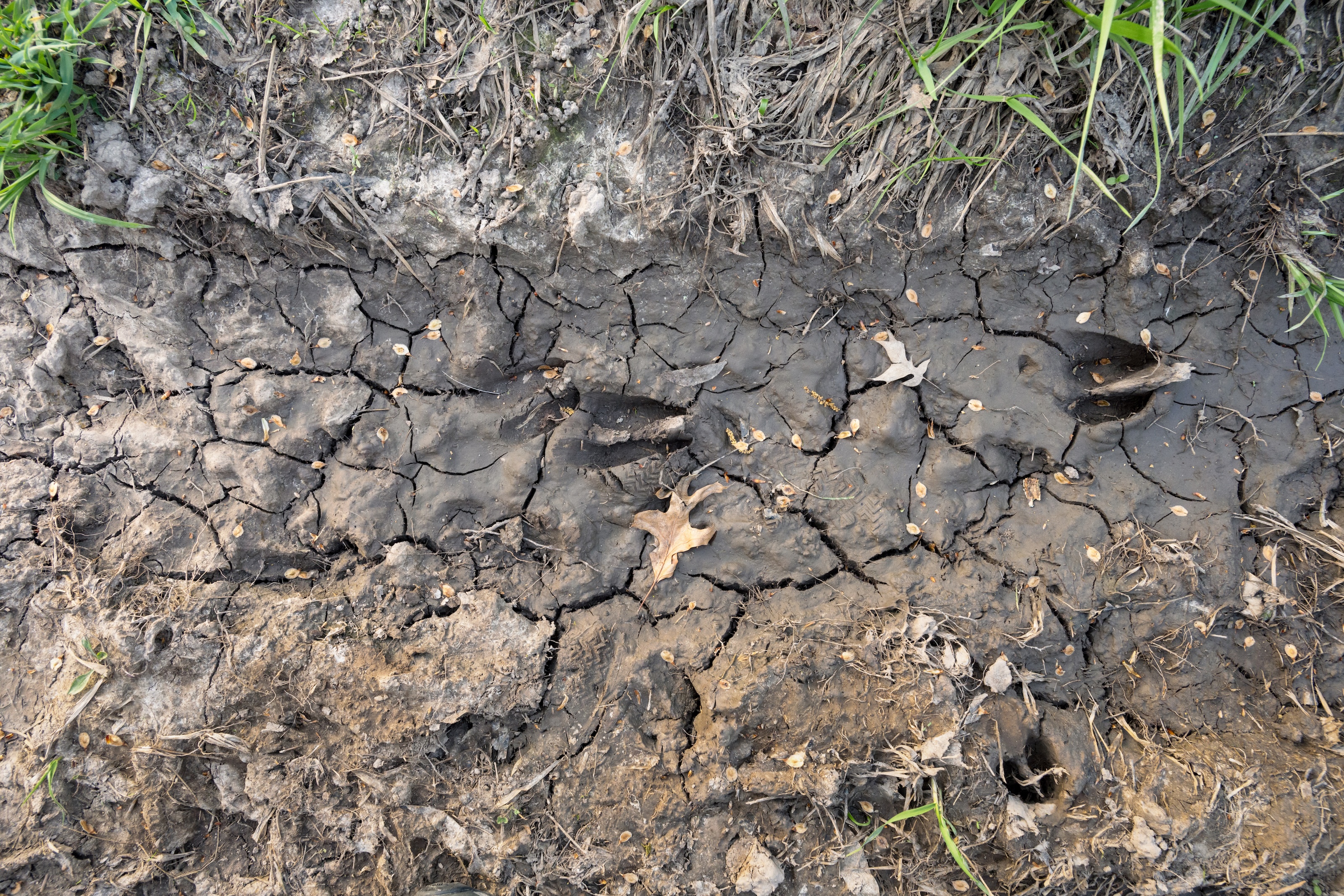
Learning to recognize and interpret deer signs is crucial for effective tracking and can be the difference between finding your buck or going home empty handed.
Tracks
Deer tracks provide valuable information about the animal that made them:
Size and Depth: Larger, deeper tracks often belong to mature bucks. Tracks measuring approximately 3½ to 4 inches long by 3 to 3½ inches wide typically indicate an older buck. The increased body weight of mature bucks causes their tracks to sink deeper in soft ground or snow compared to does or younger bucks.
Age of Tracks: Fresh tracks have sharp, well-defined edges. In snow, fresh tracks show packed but not frozen snow at the bottom. Comparing deer tracks with your own boot prints can help you learn to recognize fresh characteristics.
Direction of Travel: Deer tracks are heart-shaped, with the pointed end indicating the direction of travel. Stride length can tell you about the deer's pace—longer strides suggest the deer was moving quickly, while shorter strides indicate slower movement.
Rubs
Rubs are made when bucks scrape their antlers against trees, serving several purposes:
What to Look For: Fresh rubs have bare wood exposed with bark shavings often visible at the base. The size and height of the rub can sometimes indicate the size of the buck.
What They Tell You: Rubs mark territory and serve as visual signposts for other deer. Multiple rubs along a travel route (a "rub line") strongly indicate a travel corridor that a buck uses regularly. If you can find a thick rub line with a trail going in and out, you know it's a buck trail.
Scrapes
Scrapes are pawed areas of bare earth typically found under overhanging branches:
Appearance: A deer scrape is an oval-shaped patch of bare dirt where a buck has pawed away vegetation and deposited scent. Fresh scrapes appear moist and carry a strong odor.
Significance: Scrapes serve as communication hubs, particularly during the pre-rut and rut periods. Bucks create scrapes near their bedding areas and in areas close to doe bedding locations. They regularly check these scrapes to monitor for receptive does. Scrapes are most relevant during the rut period (primarily October and November in most regions) and become less important during the late season.
Beds
Deer beds provide insights into resting locations:
What They Look Like: Beds are flattened areas in grass or leaves where deer have rested. The size of the bed can sometimes help distinguish between buck and doe beds.
Location Significance: Finding clusters of beds often indicates a primary bedding area, which can be crucial information for understanding travel patterns. Bucks typically select bedding areas that offer security, often in thick cover or areas with good visibility and escape routes.
Methods of Tracking Bucks
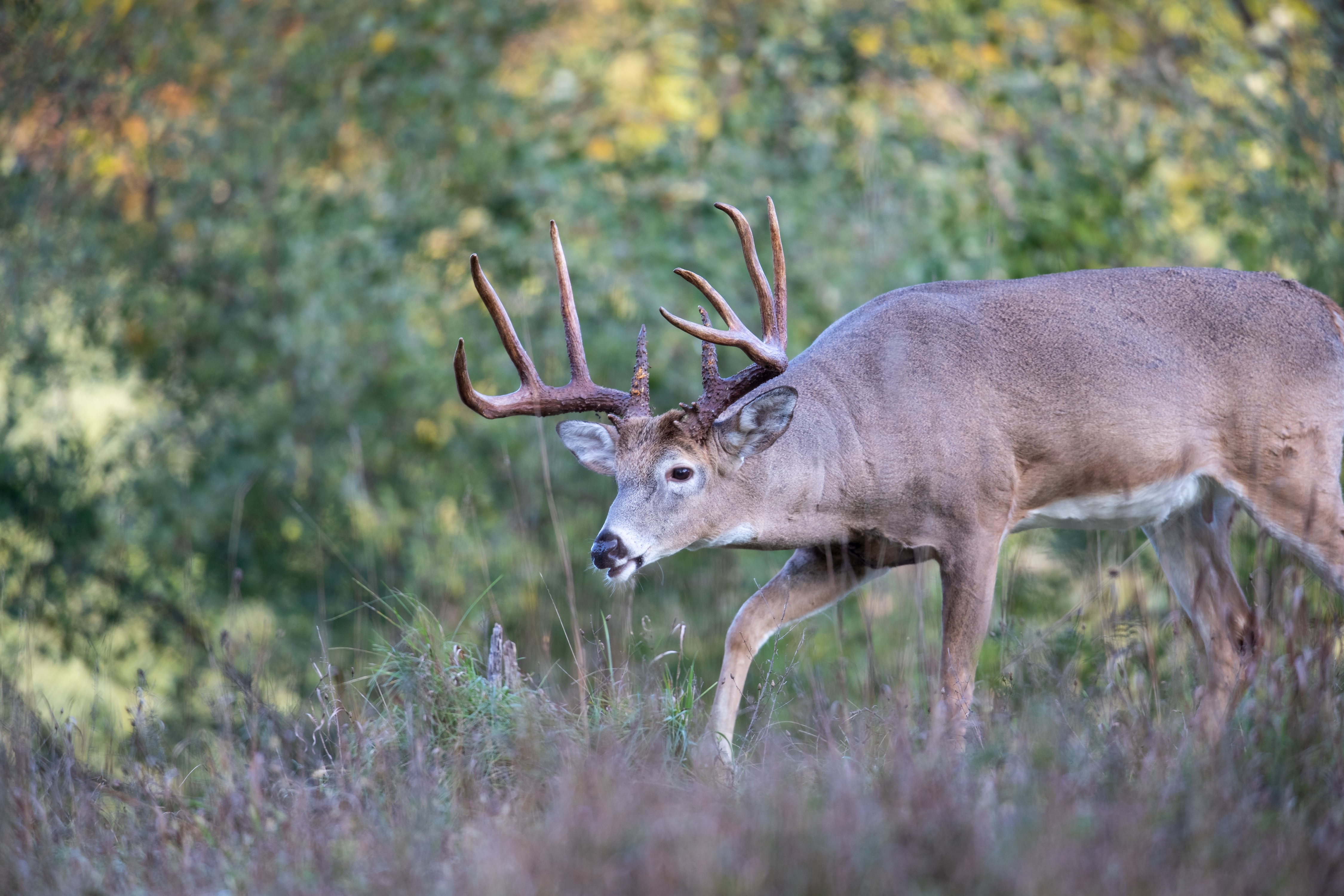
Different environments and conditions require different tracking approaches.
Snow Tracking
Snow creates ideal conditions for tracking bucks:
Finding Fresh Tracks: Look for tracks along country roads, field edges, near known bedding areas, along traditional deer trails, or on groomed snowmobile trails. Once you've found promising tracks, try to determine what the deer was doing based on the track pattern.
Following the Trail: When following a track in snow, consider the deer's behavior based on the pattern. If the buck is moving in a straight line, you can move more quickly. When tracks begin to meander or slow down, this often indicates the deer is browsing or getting ready to bed. We recommend marking your starting position with GPS or compass bearings, as bucks rarely travel in straight lines.
Wind and Approach: Always stay downwind of tracks, as bucks often circle back to check their trail before bedding. When approaching thick cover, stop and carefully scan with binoculars for pieces of a deer (horizontal lines, white throat patches, or ear movements).
Lastly, don’t forget to gear up for cold-weather tracking with high-performance hunting clothing.
Tracking on Bare Ground
While more challenging than snow tracking, bare ground tracking is possible with practice:
Finding Tracks: Focus on soft soil areas like creek beds, muddy trails, or disturbed forest floors where tracks are visible. Look for other signs like fresh rubs, scrapes, and disturbed vegetation to help follow the trail.
Movement Speed: When tracking on bare ground, move extremely slowly and deliberately, scanning constantly for additional signs. Once you've identified fresh signs and a general direction, move along what appears to be the most likely path, working the trail as slowly as possible.
Big Woods Strategy: In vast forest areas, experienced trackers often start at the top of a ridge and walk its length, as bucks typically travel along ridgelines. We also recommend making large circles covering varied terrain while looking for track crossings.
Tracking Wounded Bucks
Tracking a wounded buck can be easier than you may think, but that doesn’t mean it won’t be tricky at times. Here are some ways to effectively track your deer:
Assessing the Shot
After taking a shot, carefully observe the deer's reaction as it provides valuable information:
Body Language: If a deer runs with its tail tucked, this suggests a good hit. A deer that hunches up after being shot often indicates a gut shot. If the deer seems unaffected or moves off with its tail up, you may have missed entirely.
Initial Steps: Mark the exact spot where the animal was standing when you took the shot, this becomes your reference point if you can't immediately find blood. If possible, recover your arrow and examine it for blood color, hair, or a distinctive smell that can indicate where you hit.
Reading Blood Sign
Different types of blood provide clues about the hit location:
Bright Red Blood: Usually indicates arterial or heart blood. The volume can tell you how serious the wound is.
Pink, Frothy Blood: Almost always means a lung hit, which is typically fatal within a short distance.
Dark Red Blood: May indicate a liver hit (fatal but requires patience) or muscle tissue.
Blood with Food Particles or Green Tinge: Suggests a gut shot, which requires a long waiting period (5+ hours) before tracking to avoid pushing the animal.
Following the Blood Trail
Effective blood trailing requires patience and careful attention:
Start Slow: Even with what appears to be a fatal hit, proceed carefully and quietly when tracking. A wounded deer may stop if not pushed, offering a follow-up shot opportunity.
Look Beyond the Ground: If blood isn't visible on the ground, check surrounding vegetation, trees, and brush as wounded deer often brush against objects, leaving blood higher up.
When the Trail Disappears: If you lose the blood trail, have someone mark the last blood sign while others make small circles around that point looking for more signs. Remember that wounded deer often change direction unexpectedly.
Understanding Travel Distance: After a good double-lung or heart shot, deer typically travel less than 200 yards before expiring. With marginal hits, they can travel much farther if pushed. As one expert notes, "A mortally wounded deer will lie down within 200-300 yards (or first thick cover) and will expire in the time-frame of the specific hit. Unless pushed, this will be the final resting place for your deer".
When to Back Out
Sometimes the best tracking strategy is a temporary retreat:
Poor Shot Placement: For gut shots or liver hits, it's often best to wait several hours (4-5 for liver, 8-12 for gut) before tracking to allow the deer to bed down and expire without being pushed.
Nightfall: Unless circumstances like incoming weather or predator pressure dictate otherwise, tracking wounded deer at night is generally not recommended. Mark the last blood sign and return at daylight with better visibility.
Heading Home: Many experienced hunters have observed that wounded deer often "head home"—returning to their primary bedding area when suffering a non-immediately fatal wound. Knowledge of the buck's core area can be crucial in these situations.
Tools and Technology for Tracking
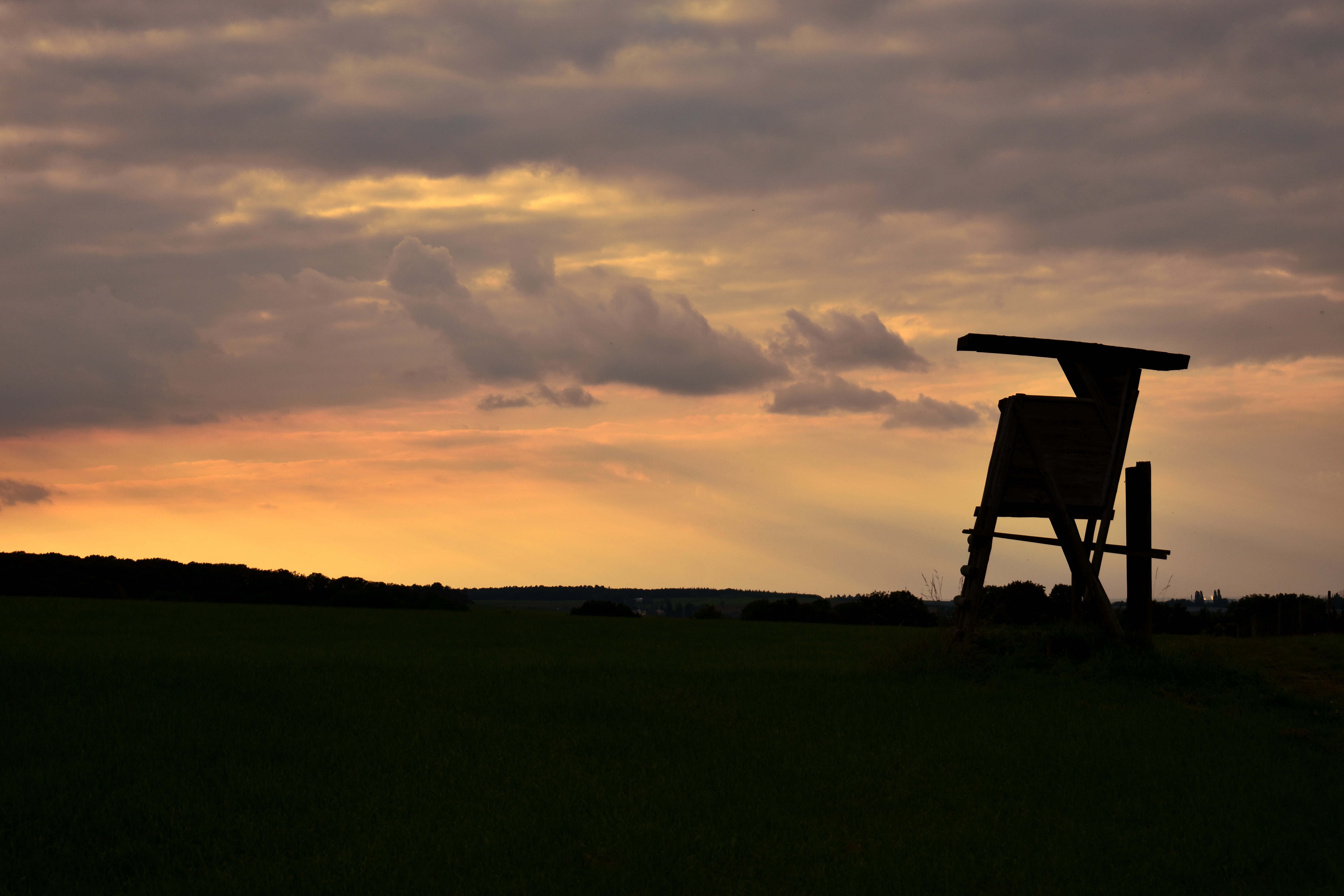
Modern hunters have access to various tools that can aid in tracking:
Essential Equipment
Lighting: Quality flashlights, headlamps, or this blood tracking light are essential for following signs in low light or tracking into evening hours.
Marking Materials: Biodegradable marking tape, toilet paper, or other materials to mark last blood or track locations.
Binoculars: Binoculars are essential for spotting deer at a distance and identifying subtle signs without disturbing the area.
Set Up Your Best Shot: Explore our Treestands and find your perfect perch for tracking season.
Digital Aids
Tracking Apps: GPS-enabled apps allow you to mark the shot location and point of impact and track your path while following blood trails.
Satellite Imagery: Tools like Google Satellite Imagery help identify deer habitat features, including terrain, food sources, and cover, that influence movement patterns.
Trail Cameras: Strategic camera placement can help understand buck travel patterns before the hunt, making tracking more predictable.
<div class="rt-cta"><a class="cta-link-button inline-link" href="https://www.fleetfarm.com/category/hunting-shooting/game-cameras/_/N-2215930423">Shop Game Cameras & Accessories</a></div>
Common Mistakes to Avoid
Even experienced trackers make these common errors:
Moving Too Quickly
Haste is the enemy of successful tracking. Moving too fast increases noise, reduces your ability to spot subtle signs, and can push wounded deer farther. Even when the blood trail seems obvious, proceed methodically and quietly.
Ignoring Wind Direction
Failing to stay downwind of tracks or blood trails can alert deer to your presence and ruin your chances of recovery. Always be mindful of wind direction throughout the tracking process.
Believing Common Myths
Two persistent myths that can mislead trackers: "wounded deer always head to water" and "wounded deer never travel uphill". Research and experience show that wounded deer may do either, neither, or both. Deer are guided by survival instinct and familiarity with their home range, not predictable rules.
Too Many Trackers
Two or three people are ideal when blood trailing as too many helpers can destroy the sign and create confusion. Designate one person as the lead tracker who follows the blood trail, with others providing support without getting ahead.
Tracking bucks is a skill that combines woodsmanship, wildlife biology knowledge, and persistence. Whether you're following tracks in fresh snow, interpreting signs on bare ground, or trailing a wounded animal, success comes through understanding deer behavior, recognizing subtle clues, and maintaining the right combination of patience and determination.
For beginners, starting with snow tracking provides the most accessible introduction to buck tracking skills. As you gain experience, you'll develop the ability to "read" the woods and follow more challenging trails. Remember that every tracking situation is unique, influenced by the individual deer, the terrain, weather conditions, and time of year.
By honing your tracking skills and avoiding common mistakes, you'll not only increase your hunting success but also deepen your connection to the natural world and your understanding of whitetail deer behavior. And always remember, the art of tracking can transform your experience as a deer hunter.
Check out our full selection of Hunting & Shooting Gear to stay prepared in the field.












